
 Your Mission…
Your Mission…
To be on the lookout for washed up sea jellies (jellyfish) or other marine creatures and send us a photo!
Priest Point Park (PPP) is a rare gem in the heart of Olympia. The 314 acre park has approximately 1.5 miles of natural shoreline.
KNOW BEFORE YOU GO!
- Check the tides before going! PPP beaches are best assessable at a 10-foot tide.
- Beware of poison oak on the shoreline. Stay on trails and don’t climb the shoreline banks!
- Print this handy mission checklist before you leave!
To learn about tides and how to use a tide chart visit the Nisqually Reach Nature Center -Part 1-Tide Prediction game!
![]()

 Welcome to Priest Point Park!
Welcome to Priest Point Park!
When you arrive, park at the Flora Vista trailhead lot. Follow the service road and near the end take the beach cut-off sign on your left. Follow the beach sign and walk along the beach to solve your mission. To loop back to the service road take the narrow side trail from the beach leading up to the Ellis Cove Trail.
The service road takes you through a section of the old growth forest. Along the way see if you can find nurse logs with red huckleberry growing from their tops, trees with cavity like holes , or ones with woodpecker drillings that wildlife might use.
Have you spied any native banana slugs?
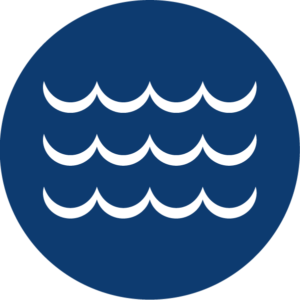
 Puget Sound
Puget Sound
Puget Sound is a large estuary in the northwest corner of Washington State making up the southern portion of the greater Salish Sea. The Salish Sea spans the borders of British Columbia, Canada and Washington State.
Puget Sound’s shorelines or beaches are referred to as the nearshore, which is the area from the top of the shoreline (end of the land) extending beyond the breaker zone. The shoreline is formed by wind and wave action. The nearshore provides a unique habitat of sea plants and grasses tolerant of salt water and the waters provide food, shelter and migration passage for many marine organisms, species of fish and shellfish.
Like our streams, trees and vegetation are very important to keeping the shoreline habitats shaded and cool preventing the sand and gravel from drying out to quickly. Many species use these habitat areas such as forage fish to lay their eggs or spawn.
Where the beach trail meets the beach, can you locate an area on the upper beach where it is sandy with small gravel that may be suitable for a school of slim 8 inch fish to lay their tiny sand sized eggs?

 Forage Fish
Forage Fish
What are forage fish? Forage fish are small schooling fish that are the key prey or food source for the entire ocean food web. They lay their eggs in the upper intertidal zone in areas of sandy, small gravel beaches of Puget Sound and at Priest Point Park.
Do you know which forage fish can be found in south Puget Sound?
Primarily, Surf smelt, Pacific sand lance are found laying their eggs on the beaches of South Sound. Pacific herring may also be found although they lay their sticky eggs to the blades of eelgrass in the shallow marine waters. These small fish are an essential food source for many marine birds and fish, including salmon.
What other fish live here? Puget Sound is home to approximately 70 families of fish both large and small. Small fish such as bay pipefish and even the second largest shark in the world, the basking shark can be found in the depths of Puget Sound.
![]()
 Fresh Water
Fresh Water
Find the area where freshwater seeps onto the beach. Where is this water coming from? A freshwater marsh! This coastal marsh wetland is located above the high tide line and appears to be out of reach from salt water. During high tides you will see water seeping from the cattail area of the marsh onto the beach. Coastal wetlands provide valuable habitat for many wildlife species and filter sediment out of the water before it flows into the ocean.
What animals do you think use this wetland can you see any? You might find birds like the marsh wren, small rodents, raccoon and even river otter!
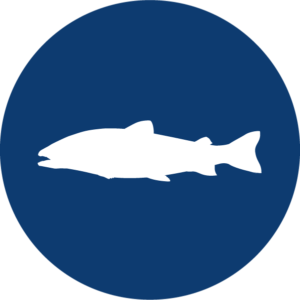
 Geology of Puget Sound
Geology of Puget Sound
How do you think Puget Sound was formed? Over 15,000 years ago a huge glacier was once located here! When the ice sheets melted, it formed the large body of water we know as Puget Sound.
As you walk along the beach notice the different layers of soils in the banks and cliff faces. These layers of clay, sand and gravel were all deposited when the glacier receded. How many different layers can you find?
For a deeper dive into the geology of the area and Puget Sound, watch this 13 minute video: https://www.youtube.com/watch?v=oSSxdogrv1s.
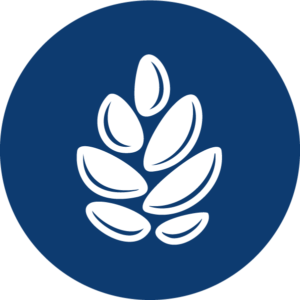
 Giant Chain Fern
Giant Chain Fern
Put your spy glasses on! Can you find a very large fern, higher up on the steep, moist beach slopes that has chain like rows of blades on the fronds of the fern?
This giant chain fern grows throughout the coastal cliffs of Puget Sound and is far larger than our common sword fern, which likes the drier upland forest. These blend in with the sword fern and are easy to miss, so use your best sleuthing skills and count how many you find along the way!
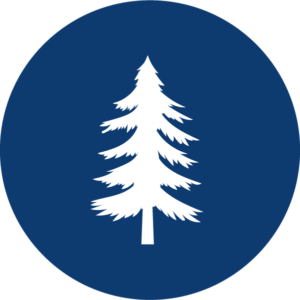
 Pacific Madron e
Pacific Madron e
Solve this riddle! I live a long time and can be seen growing tall on the cliffs often over hanging the beach. My evergreen leaves are glossy and my flowers in spring smell sweet for the bees. In autumn my ripe red berries are eaten by cedar waxwings and other birds. Most characteristic of all is my satiny smooth peeling red bark exposing sometimes green beneath. What am I? A Pacific madrone!

 Jellyfish
Jellyfish
Are they really a fish? They are not! Unlike fish they have no backbone and are more appropriately named sea jellies.
Have you found any clear or orangish solid jelly like blobs on the beach? These are washed up sea jellies!
We have several species of jellies in Puget Sound. The three most common that you are likely to see are the moon jelly, fried egg jelly and lion’s mane jelly. Jellies have stinging cells on their long tentacles used to capture prey. The sting of the fried egg jelly and the lion’s mane can be quite painful so beware and do not touch.
BEWARE: Even dead sea jelly tentacles have stinging cells and can still sting you!
Why are they found on the beach? After large storms over the ocean, sea jellies are found washed up by waves on the beaches. For the last several years sea jelly concentrations have dramatically increased which has led to finding more dead jellies on local beaches. Scientists believe their increase may be due to increased water temperatures. Check out the Eyes Over Puget Sound program to see what is currently happening in Puget Sound!
Did you know? There have been unusual mass “blooms” of sea jellies in Puget Sound over the past years. Scientists are trying to understand what these changes are about.
Otehr fish
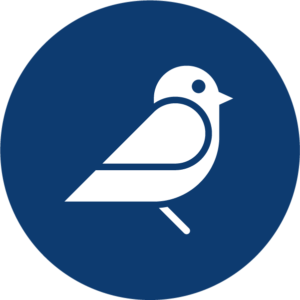
 Coastal Feeder Bluffs
Coastal Feeder Bluffs
How do they get their name? They “feed” sand and gravel to the beach. Without them we would have no beaches.
How are beaches formed? Wave action is the major force shaping our beaches. The powerful waves dislodge sands and gravel from the shore and bluffs, then between wave action and gravity these sediments are distributed forming our beaches.
Notice the different sizes of the gravel or rocks along the beach. In areas you will find sand and small pea sized gravel. Other areas the rocks are larger or sit on top of a hard clay layer. How sand and smaller gravels are distributed is dependent upon the wave action and the shape of the land. In areas where the rocks are larger no sand has been deposited but delivered elsewhere. A portion of the beach may have a sandy bluff above it but little to no sand on the beach below. Where did the eroded sand go? It was distributed by waves up or down in another place on the beach.
Our coastal beaches and the nearshore provide habitat to many marine critters. The sandy smaller gravel beaches are essential habitat for spawning forage fish. During high tide the nearshore is used by juvenile salmon for feeding and migration. At low tide you can see the holes of clams in the sand and mud and find crabs hiding under the rocks.
At low tide did you find rocks with crusty white deposits on them? These are live acorn barnacles and they are small crustaceans or animals related to crabs. When the tide is low they close up tight so they won’t dry out and when the tide is in they use their feather like tentacles to feed. Barnacles can also be found on docks and pilings.
The sandy bluffs also provide nesting sites for several bird species such as the belted kingfisher. These birds all rely on forage fish for survival. Can you find a nest “hole” in the cliff or hear the kingfishers chatter like call? A sample kingfisher call.
DO NOT CLIMB ON BLUFFS: Climbing on sandy cliff faces and bluffs destroys this unique habitat and severely increases erosion.
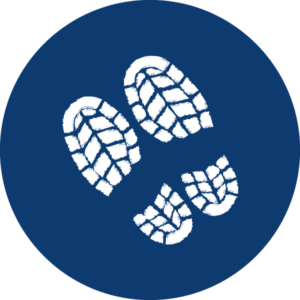
 Ellis Cove Trail
Ellis Cove Trail
Take the trail up the bank and to the left. Follow it back along the ridge overlooking the water staying to the left when the trail forks. At the end of the ridge trail it climbs up to the service road. At this intersection, go right onto the service road looping back to the parking lot.
Along the way see what native plants and fungi you may find. You may find tall Western red cedar, Western hemlock, salal and in spring the Western white trillium bloom.
Can you detect the differences in the tree bark, unique to each tree?
 Ivy, Ivy Everywhere
Ivy, Ivy Everywhere
Do you know that plants such as English ivy and English holly as well as many others are invasive? This means they tend to spread out of control taking over our natural areas.
Why is ivy a problem? Ivy plants are so aggressive that they out-compete with the natural plants so much so that nothing can grow under their dense mat. Ivy on trees affects the trees health and can eventually kill the tree leaving behind nothing but ivy.
How can you help?
- Never plant invasive plants in your garden
- Never dump yard waste in natural areas
Have question about what to plant visit:
https://www.co.thurston.wa.us/tcweeds/
https://www.co.thurston.wa.us/health/ehcsg/index.html
Grow Smart Grow Safe:
https://www.growsmartgrowsafe.org/Home/Contact
You can also volunteer with Olympia parks to restore natural areas!

 Restoration
Restoration
As you follow the trail back into the forest, you can see where restoration has occurred.
How do we know what to look for? No ivy!
This area has taken many years to grow natural after the ivy was removed. Now the ground is covered with many different plants instead of just one plant, ivy. The main ground cover plant you see here is waterleaf.

 Bald Eagle
Bald Eagle
Before you exit the trail, listen to see if you can detect the call of a bald eagle. Often, along the beach and the ridge trail, bald eagles can be heard and seen. Bald eagles like to use tall trees for roosting and nesting. Have you seen any?
 Congratulations!
Congratulations!
You have completed your mission to be on the lookout for washed up sea jellies (jellyfish) or other marine creatures! Don’t forget to login to the Goose Chase App and submit your photo for this mission to collect your park specific sticker!